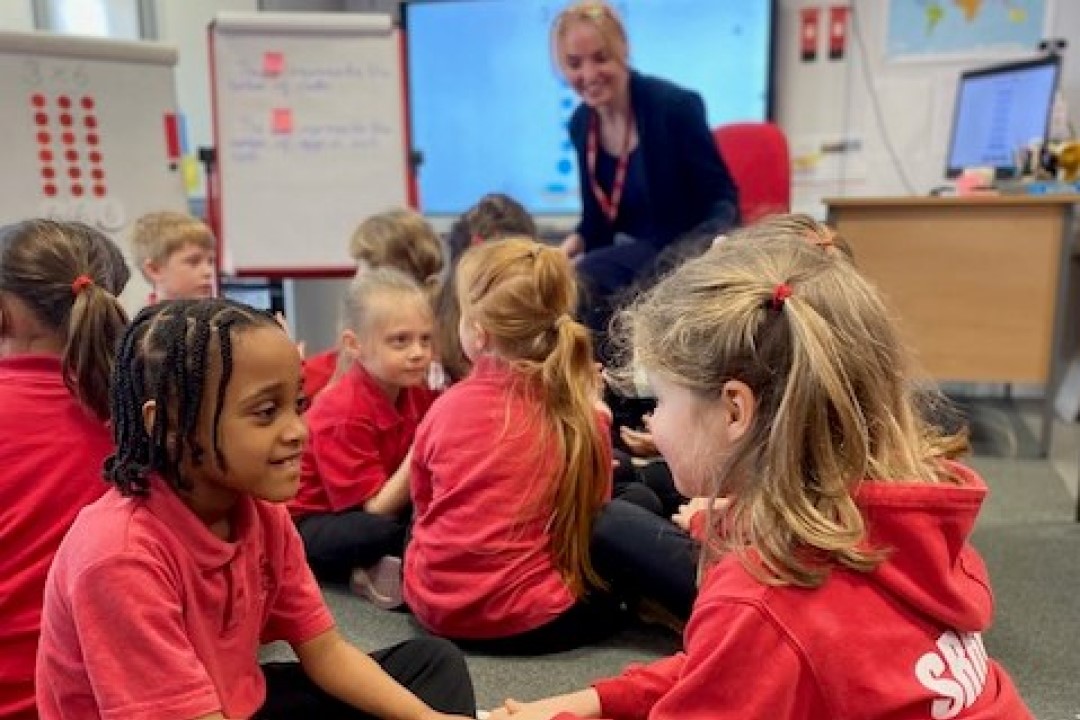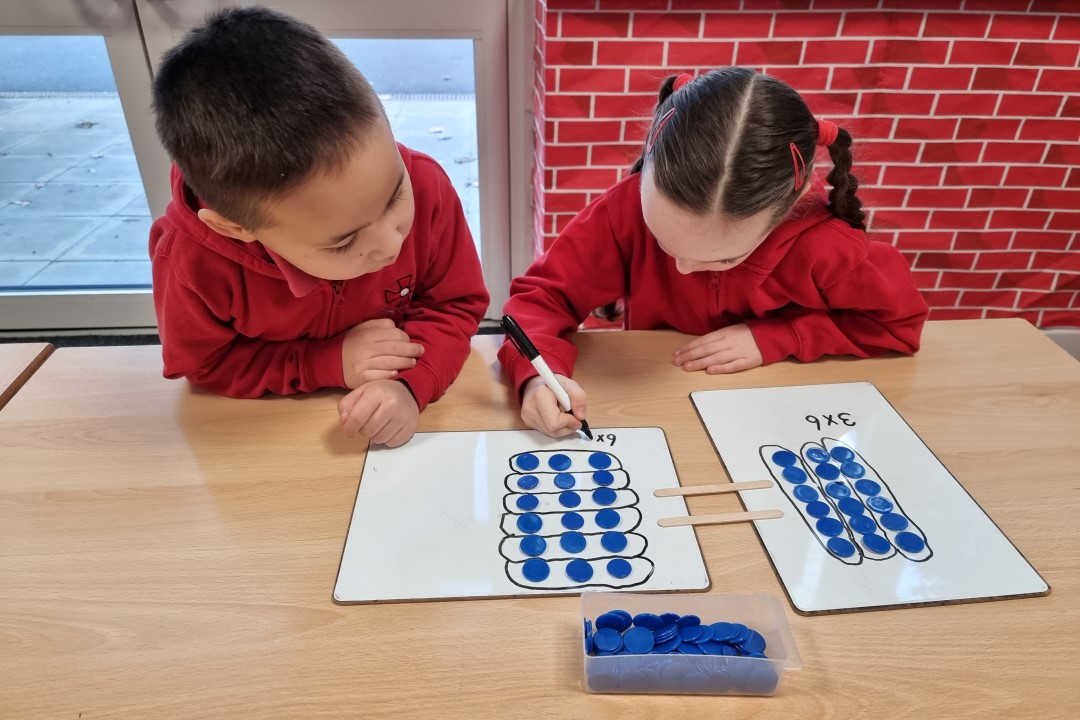Planning and sequencing for curriculum prioritisation
A maths lead explains how our resource has given her teachers an easy route into the mastery materials as well as excellent pedagogical development
02/03/2022

When we asked Una Green, how teachers in her school were getting on with using the NCETM Curriculum Prioritisation resource, she didn’t hold back:
“I know this might sound dramatic, but I do actually think it has revolutionised the teaching of maths.”
Una is maths lead and Year 2 teacher at St Richard Reynolds Catholic College in Twickenham, an all-through 4-18 school, with one-form entry at primary school. In this article, she explains how the Curriculum Prioritisation resource has given teachers at her school a route into the rich NCETM mastery materials.
Why Curriculum Prioritisation?
As children returned to school in March 2021, Una and her colleagues recognised that their pupils had some gaps in key knowledge and skills following sustained provision of online learning due to Covid. Already involved in a Maths Hubs Teaching for Mastery Work Group in 2020/21, Una was encouraged to take a look at the NCETM summer term Curriculum Prioritisation resource. She decided to use it in her school to recalibrate the summer curriculum. By prioritising key topics, she and her colleagues aimed to secure firm foundations before moving onto new learning. They were so impressed that they adopted the ongoing resource as it began to be published in the autumn term. This resource is now complete and provides a full prioritised curriculum mapping for Years 1-6. Here's a two-minute video tour of the resource:
Why were they impressed?
Until the pandemic hit, the school had been using a textbook scheme to support planning and teaching with a mastery approach, and to suggest a sequence of learning. Now Una recognised a need for something beyond trying to muddle through, to the timetable of the textbook, when so much class time had been missed. As well as suggested ways to assess learning and prioritise key topics, Una was impressed by the detail of the teacher guidance provided by the Curriculum Prioritisation resource:
“What was missing with the textbook approach” says Una, “was the pedagogy behind what we were teaching. We weren’t really exposed to that subject knowledge, core knowledge and skills that the NCETM materials make explicit. The learning sequence in the Curriculum Prioritisation resource has made this more accessible to teachers. It has provided us with an overarching curriculum framework, ensuring that coherence is at the core of our curriculum. It’s such good guidance to educate us as practitioners.”
Year 2 pupils in Una’s class, learning about commutativity (i.e. that ‘3 groups of 6’ is the same as ‘6 groups of 3’). Y2, Unit 5, Learning outcome 26.
Why didn’t they use the NCETM materials previously?
Like many teachers, Una had been impressed by the detail and thoroughness of the NCETM Primary Mastery Professional Development materials (‘the spines’) but had felt overwhelmed by the size of the documents and how to sequence the learning in the curriculum. The prioritisation resource sorts all this out.
The Curriculum Prioritisation resource begins with a week-by-week curriculum mapping and directs teachers, for each unit of learning, to the relevant professional development and teaching resources from the spines.
How does this look in Year 2 multiplication?
When we spoke to Una (spring term 2022) she was teaching multiplication to Year 2, covering the 2, 5 and 10 times tables.
“We are going into such depth and analysis of the 2s, 5s and 10s. Previously we just knew we had to do the 2s, 5s, and 10s and we taught about equal groups, but not ever to this level of exploring the structure. The materials provide the precise and correct mathematical language to model with children. Children initially use their own language to talk about the mathematics, and we develop their oracy skills with the use of stem sentences to provide language structure and connect ideas.”
This mini-video shows the animations of a set of three slides from Learning outcome 6: multiplication when a group contains zero or one items.
“My Year 2s now have no problem telling me that when one of the factors is zero, the product is zero, and when one of the factors is one, the product is the other factor.”
Year 2 curriculum map (click to download a more detailed version)
Multiplication is Unit 5 in the Year 2 mapping, and a guidance time of seven weeks is given. Each unit has a downloadable PowerPoint file that brings together in one place, all the relevant classroom slides from the PD materials, arranged into sequenced learning outcomes that suggest appropriate small steps of learning. From the PowerPoint, teachers can:
- use the animated slides in their classrooms
- follow links to relevant points in the NCETM Mastery Professional Development materials for teacher guidance and explanations of the pedagogy
- cross-reference with the ready-to-progress criteria from the DfE 2020 guidance.
Una is particularly enthusiastic about the animated slides. Teachers can find hours disappearing when creating their own resources. Because this is already taken care of, the teacher can focus on tweaking plans for their own class and getting the pedagogy right.
“The animated materials really show that lovely structure of the maths in the way that a stale static image doesn’t.”
This mini-video show one of the animated slides from Year 2, Unit 5, Learning outcome 13: Representing counting in tens as the ten times table.
And when Una’s headteacher popped her head into the classroom, she said:
“I used to teach in Year 2, and they never used to talk like this about their maths”
Una acknowledges that the material is challenging, requiring planning time to tweak to fit her own class and school.
“However,” she says, “we are passionate about delivering a high-quality curriculum and we believe that the NCETM has provided us with a robust and future-proofed framework to teach core concepts deeply so that our pupils are able to retain and apply their knowledge as they progress through the primary years.”
<p>Give it a try!</p>
<p>Why not take a look at the resource and try out a unit with your class? If you like it, you might want to consider adopting the full mapping for next year. All the resources are carefully sequenced, easily organised, and free to look at and download.</p>
Discover
